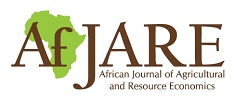Labour-saving technologies mitigate the effect of women’s agriculture time-use constraints on stunting in rural Uganda
Racheal Namulondo & Bernard Bashaasha
Abstract
Women’s time allocation is a dimension of women’s empowerment in agriculture, and is recognised as a pathway through which agriculture can affect child nutritional status in developing countries. Longer hours of farm work can potentially increase women’s time constraints, reducing the time allocated to child-caring responsibilities and raising the risk of poor child nutritional status. Using a three-wave household panel dataset from the Feed the Future Innovation Lab on Nutrition surveys in the north and southwest of Uganda, we tested the hypothesis that the negative effect of women’s agriculture time-use constraints on child stunting is mitigated for households that use labour or timesaving agricultural technologies (LSATs). The results show a positive and significant association between the number of hours per day that women spend on agricultural work and the risk of stunting in children aged zero to 23 months who live in households that do not use animal traction for ploughing. However, this association is statistically insignificant, and even turns negative for households that adopted the labour-saving technology. Our findings indicate that LSATs have the potential to lessen a household’s agricultural workload, giving mothers more child-caring time, and hence improving child nutritional status. Therefore, agriculture could have better nutritional outcomes if policies and programmes were designed to have interventions that reduce the workload in farming activities and thus reduce pressure on women’s time.
